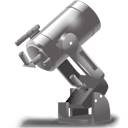|
Nb
of visitors since 02/14/2009 : 423596
Nb
of visitors today : 104
Nb
of connected : 5
Website News: |
Astronomy tutorialsThis page contains most of the knowledge I've learned over the years, about the techniques of astrophotography and planetary imaging in particular. Finding no comprehensive and easily affordable tutorial on the techniques of image processing with Iris, I rolled up my sleeves and one year later, the Iris tutorial below was born. You'll learn to process your planetary videos made with a b&w camera equipped with filters, a basic color webcam, or a combination of both.
|
|
|
| The discovery of the planet Neptune was a triumph of mathematics. While studying the orbit of the planet Uranus, Urbain Leverrier realized that its perturbations suggested the presence of an unknown planet in an orbit beyond that of Uranus. Leverrier promptly calculated where the planet should be found. On September 23, 1846, the astronomer Johann Galle (in Berlin) looked at the indicated spot - and discovered Neptune in less than an hour. |
|
|
|
|

